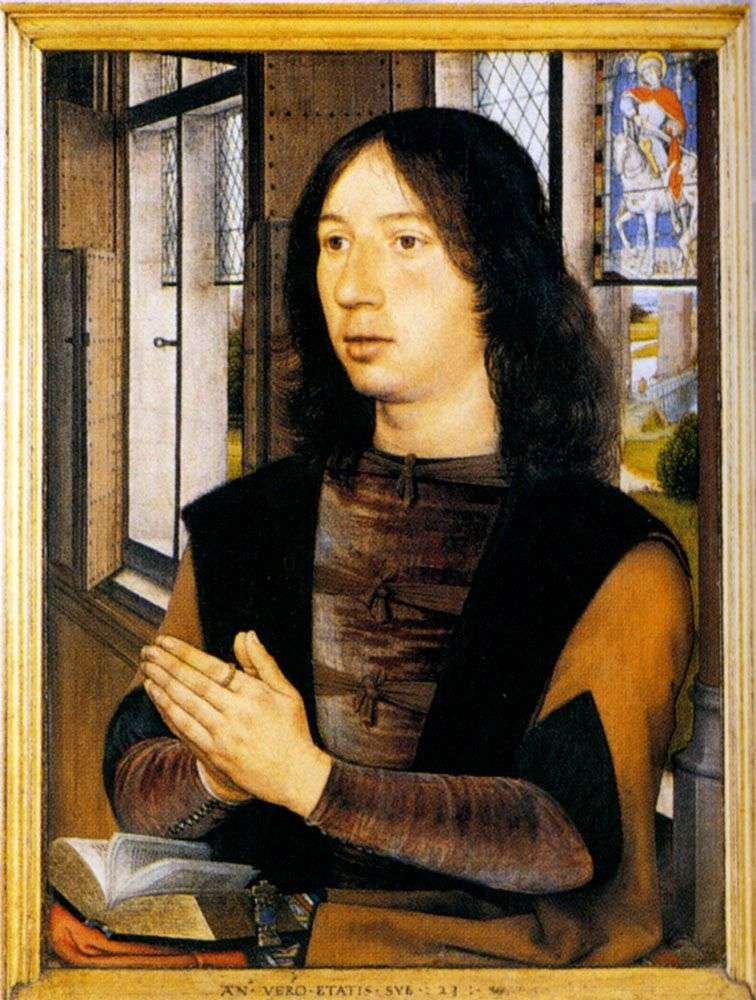
It seems that Martin’s long wavy hair is slightly shaking at the ends of the breeze that fills the room through the open window. His full, half-open lips utter a prayer. His full life image is like a mirror image, which can disappear at any moment.
Martin van Neuvenhof, who was to become the mayor of Bruges in 1497, came from a generation that had a dominant family position. When Maximilian of Austria received the imperial crown, Martin became his active supporter. Shortly after the completion of the diptych in Bruges, a popular uprising against Maximilian broke out. He was captured, his supporters and leaders were tortured and interrogated, and then executed on the scaffold.
Martin Jan’s van van Neuvenhof was tortured and then beheaded. So the works of Memling convey the personal observations of the artist; let the refined, but exact reality is shown in the image of the severed head of John the Baptist and the beating of blood from the headless body like a fountain. Only in this way could earthly life appear in the painted world of Memling’s paintings. Judging by the reflection in the mirror, the young man looks directly at Madonna, and she sits facing the window.
The three-quarter turn position used on the right casement was chosen because the viewer standing before the Virgin Mary would have taken it if she turned her head slightly to the right. It is assumed that the viewer and Martin are at the same distance from the Madonna, only the first sees her full face, and the second – in profile. In the mirror you can see that Martin in a black cloak is on his knees. On the stained glass window behind the young man is depicted his patron Saint Martin.
 Diptych. Martin van Nyuvenhof. Left half by Hans Memling
Diptych. Martin van Nyuvenhof. Left half by Hans Memling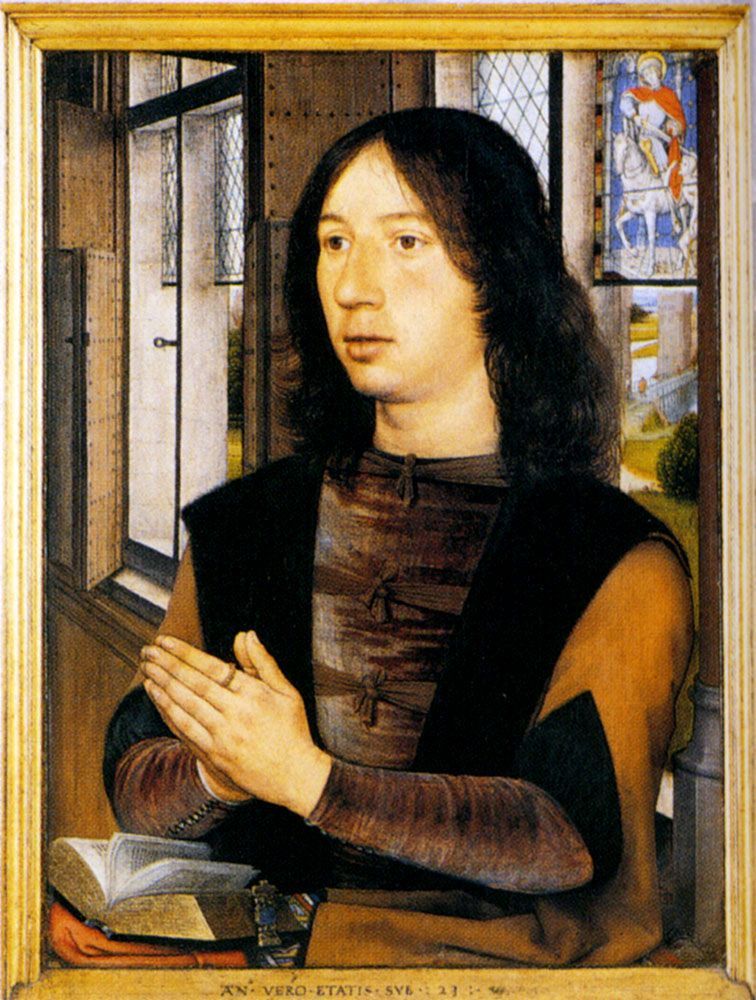 Diptyque. Martin van Nyuvenhof. Moitié droite – Hans Memling
Diptyque. Martin van Nyuvenhof. Moitié droite – Hans Memling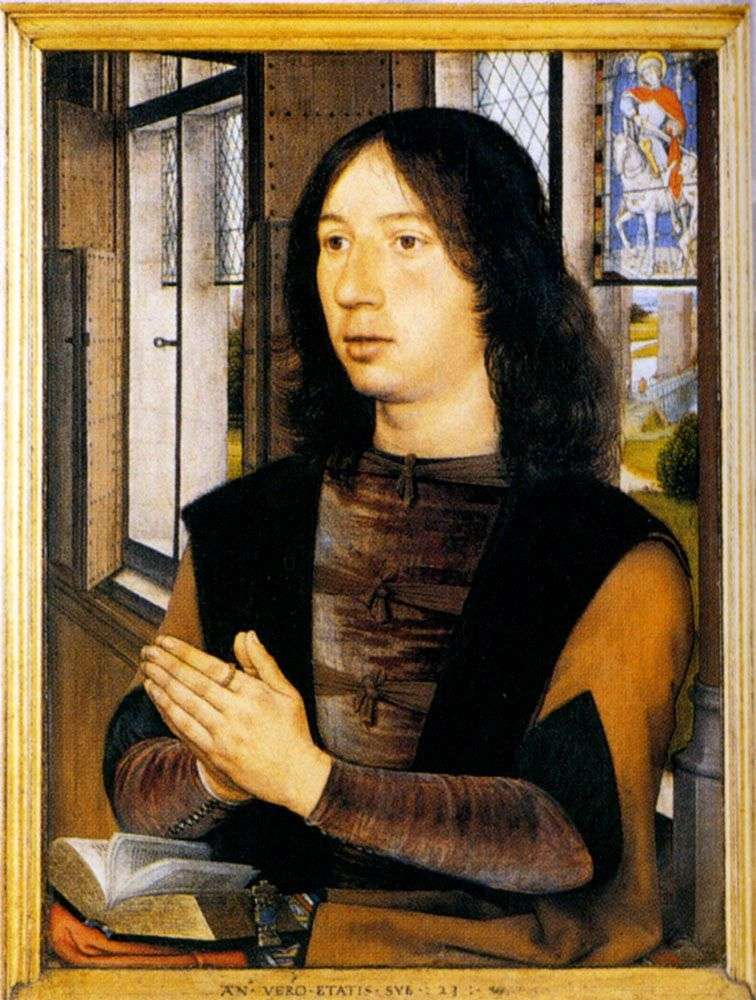 DípticoMartin van Nyuvenhof. La mitad derecha es Hans Memling
DípticoMartin van Nyuvenhof. La mitad derecha es Hans Memling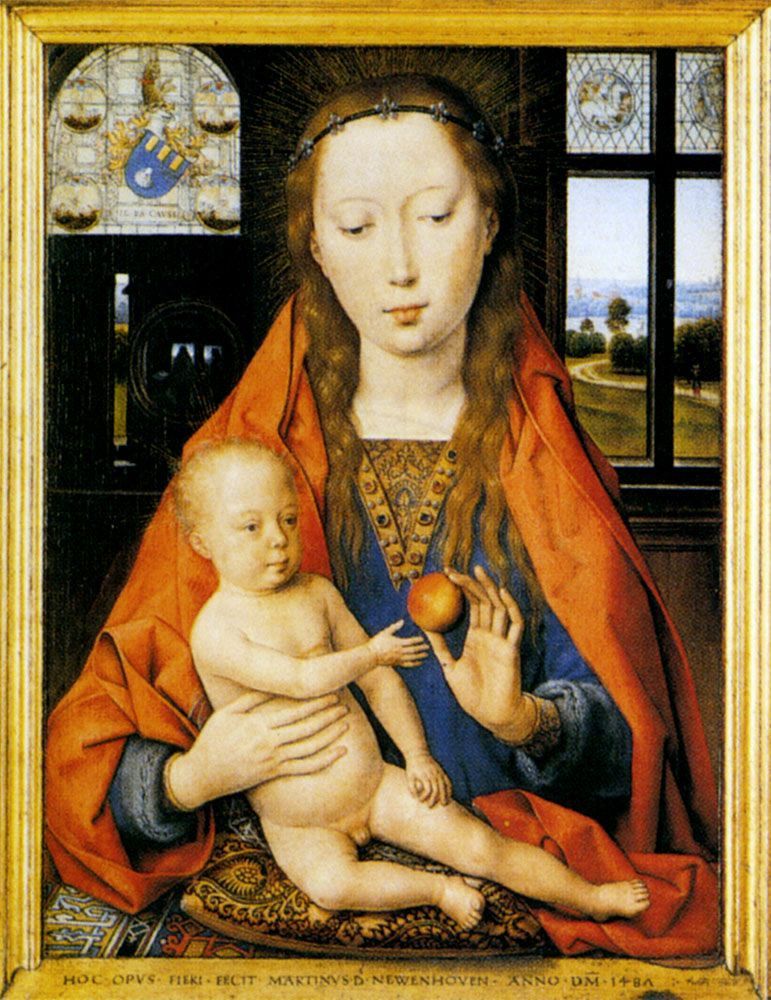 Diptyque. Martin van Nyuvenhof. Moitié gauche – Hans Memling
Diptyque. Martin van Nyuvenhof. Moitié gauche – Hans Memling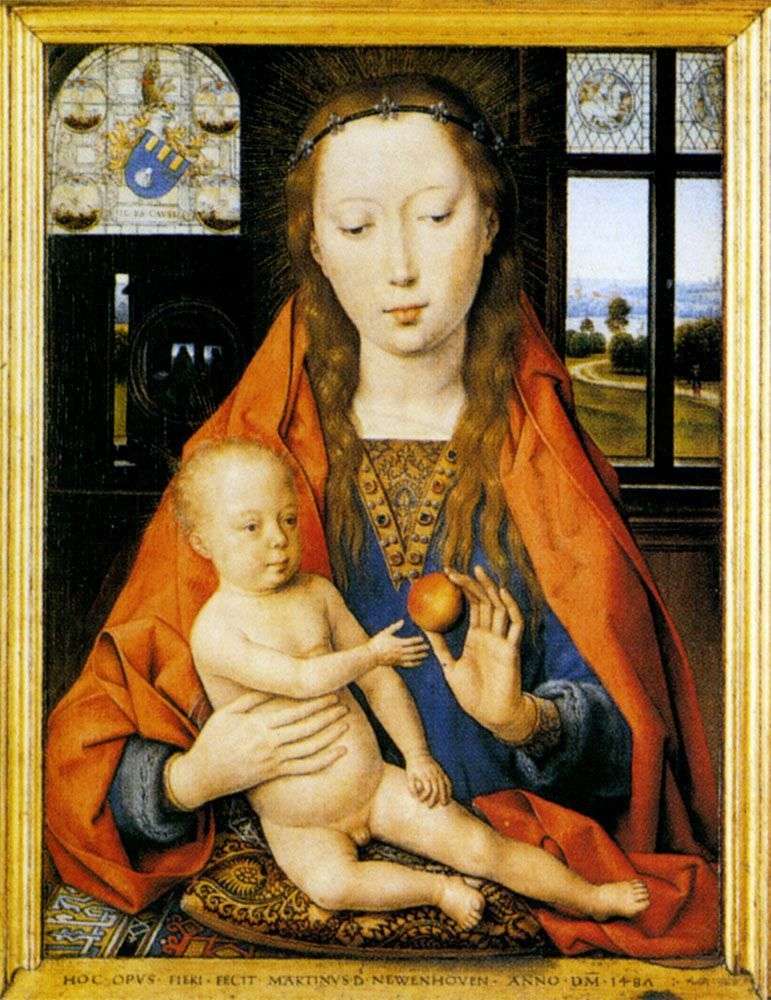 DípticoMartin van Nyuvenhof. Mitad izquierda – Hans Memling
DípticoMartin van Nyuvenhof. Mitad izquierda – Hans Memling Last Judgment. Central triptych door by Hans Memling
Last Judgment. Central triptych door by Hans Memling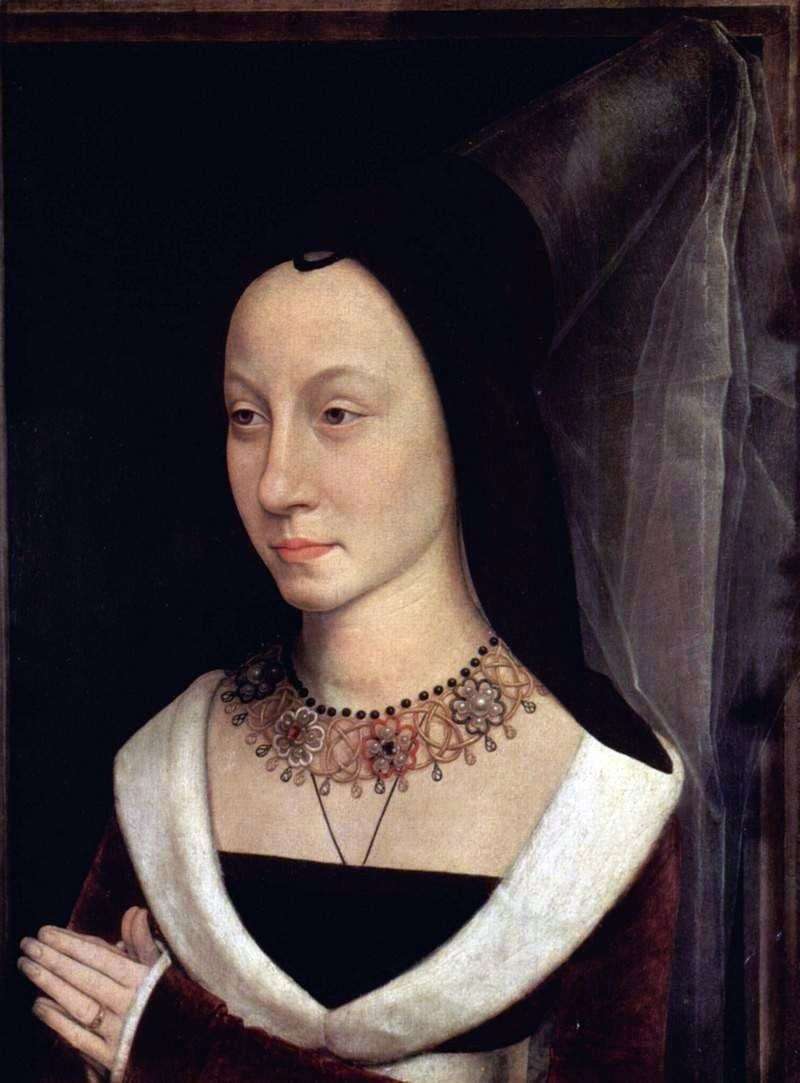 Portrait of Maria Baroncelli by Hans Memling
Portrait of Maria Baroncelli by Hans Memling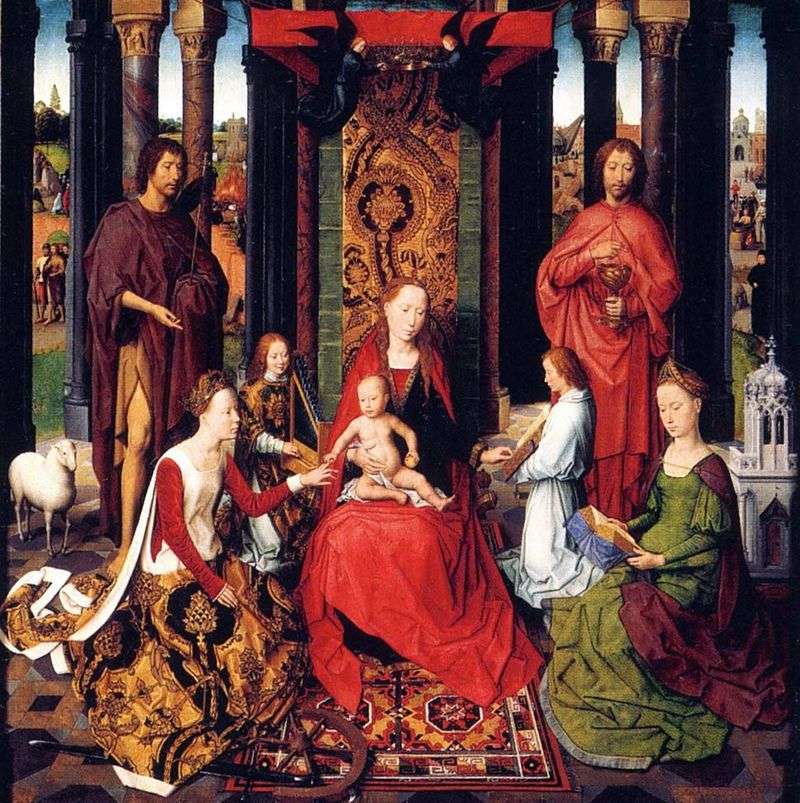 Altar of the Two Johannes by Hans Memling
Altar of the Two Johannes by Hans Memling